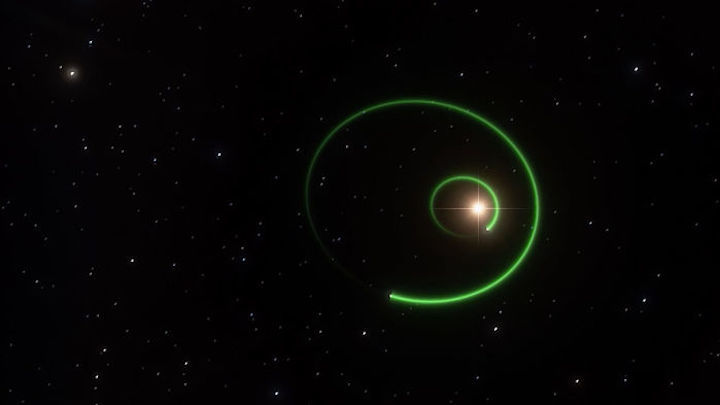29.09.2019

A solar system 31 light-years away is challenging astronomers’ theories about how some types of planets form.
One leading notion about how the gas giants in our solar system—Jupiter, Saturn Uranus, and Neptune—developed is that agglomerations of dust and small pebbles eventually grew large enough to gravitationally attract large amounts of even light gases such as hydrogen and helium. But that sort of planetary evolution doesn’t seem to work for all solar systems.
Take the star dubbed GJ 3512 and its retinue of planets: The parent star is a red dwarf about one-eighth the mass of our own sun orbited by two gas giants (depicted in an image from a video simulation above). The larger planet, whose presence has been confirmed, is almost half the mass of Jupiter and orbits the star once every 214 days, researchers report today in Science. Its suspected companion, which orbits farther out and apparently circles the star every 3.8 years or so, may weigh at least half as much as Saturn.
For a solar system that contains such a small parent star, these large, gassy orbs probably didn’t gradually grow around rocky cores like those in our solar system, because that process would have been so slow that much of the gas now part of the planets would have instead escaped into interstellar space. Instead, the researchers propose, turbulence in an unusually massive disk of gas and dust swirling around the nascent GJ 3512 may have caused it to break into gas-rich clumps that eventually coalesced into the giant planets that scientists discern today.
GJ 3512’s sort of solar system is likely a rare one: The team’s analyses suggest only 3% of stars with masses less than three-tenths that of our sun will host gas giant planets. In most cases, the star’s retinue of companions will instead be smaller, rockier orbs.
Quelle: AAAS
